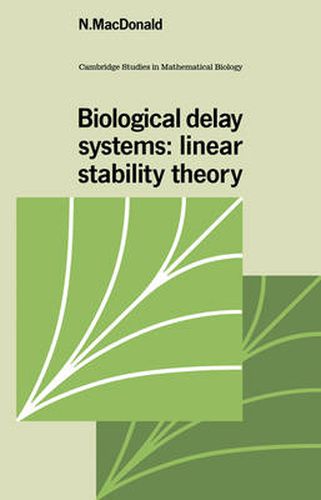Readings Newsletter
Become a Readings Member to make your shopping experience even easier.
Sign in or sign up for free!
You’re not far away from qualifying for FREE standard shipping within Australia
You’ve qualified for FREE standard shipping within Australia
The cart is loading…






In studying the dynamics of populations, whether of animals, plants or cells, it is crucial to allow for intrinsic delays, due to such things as gestation, maturation or transport. This book is concerned with one of the fundamental questions in the analysis of the effect of delays, namely determining whether they effect the stability of steady states. The analysis is presented for one or two such delays treated both as discrete, where an event which occurred at a precise time in the past has an effect now, and distributed, where the delay is averaged over the population’s history. Both of these types occur in biological contexts. The method used to tackle these questions is linear stability analysis which leads to an understanding of the local stability. By avoiding global questions, the author has kept the mathematical prerequisites to a minimum, essentially advanced calculus and ordinary differential equations.
$9.00 standard shipping within Australia
FREE standard shipping within Australia for orders over $100.00
Express & International shipping calculated at checkout
In studying the dynamics of populations, whether of animals, plants or cells, it is crucial to allow for intrinsic delays, due to such things as gestation, maturation or transport. This book is concerned with one of the fundamental questions in the analysis of the effect of delays, namely determining whether they effect the stability of steady states. The analysis is presented for one or two such delays treated both as discrete, where an event which occurred at a precise time in the past has an effect now, and distributed, where the delay is averaged over the population’s history. Both of these types occur in biological contexts. The method used to tackle these questions is linear stability analysis which leads to an understanding of the local stability. By avoiding global questions, the author has kept the mathematical prerequisites to a minimum, essentially advanced calculus and ordinary differential equations.